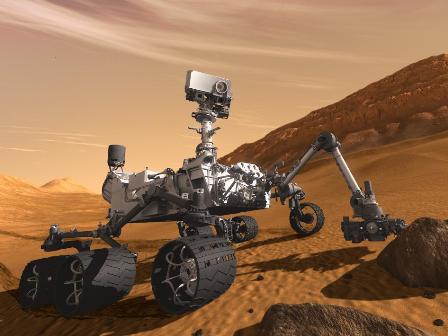
It has been a year since NASA’s Curiosity, a robot, reached the planet Mars to collect proofs of life there. No one can deny Curiosity’s role in opening new horizons in the world of science and technology as it actually was able to prove the existence of life on the red planet.
Sarah Marcotte, a member of the mission’s Mars Public Engagement team handling queries from the common people, said at a recent chat with Curiosity followers:
“Curiosity has enough fuel to last for about a decade and is built to be robust. Mission length is one Mars year, two Earth years, but we expect it to last much longer.” According to her, the mission cost about $2.5 billion which can be extended “as long as possible”.
NASA is finally able to develop a new star after a number of budget cuts. In order to celebrate Curiosity’s first anniversary, NASA is going to throw a party at its headquarters in Washington. Also, at the party a video of curiosity’s first year on mars will be shown by the chief Charles Bolden and International Space Station astronauts.
Curiosity rover is considered as one of the most expensive and daunting tasks ever completed by NASA. The robot travelled about 570mn km in order to accomplish this mission. It reached Mars in an unconventional way; first a parachute, then a crane hovering in place with the help of small thruster rockets, and then Curiosity was gently lowered on the planet’s surface with cables attached to the crane.
In order to know whether the mission was succeeded or failed the mission controllers waited for seven long minutes. These seven minutes is the time when the data from mars travel the distance.
Marcotte at this moment said:
“For me landing was the most intense moment. We were on the edge of our seats waiting to hear how the seven minutes of terror would end. The feeling when we got that first photo back of the wheel on the ground was one of the greatest feelings in the world.”
Photo: NASA